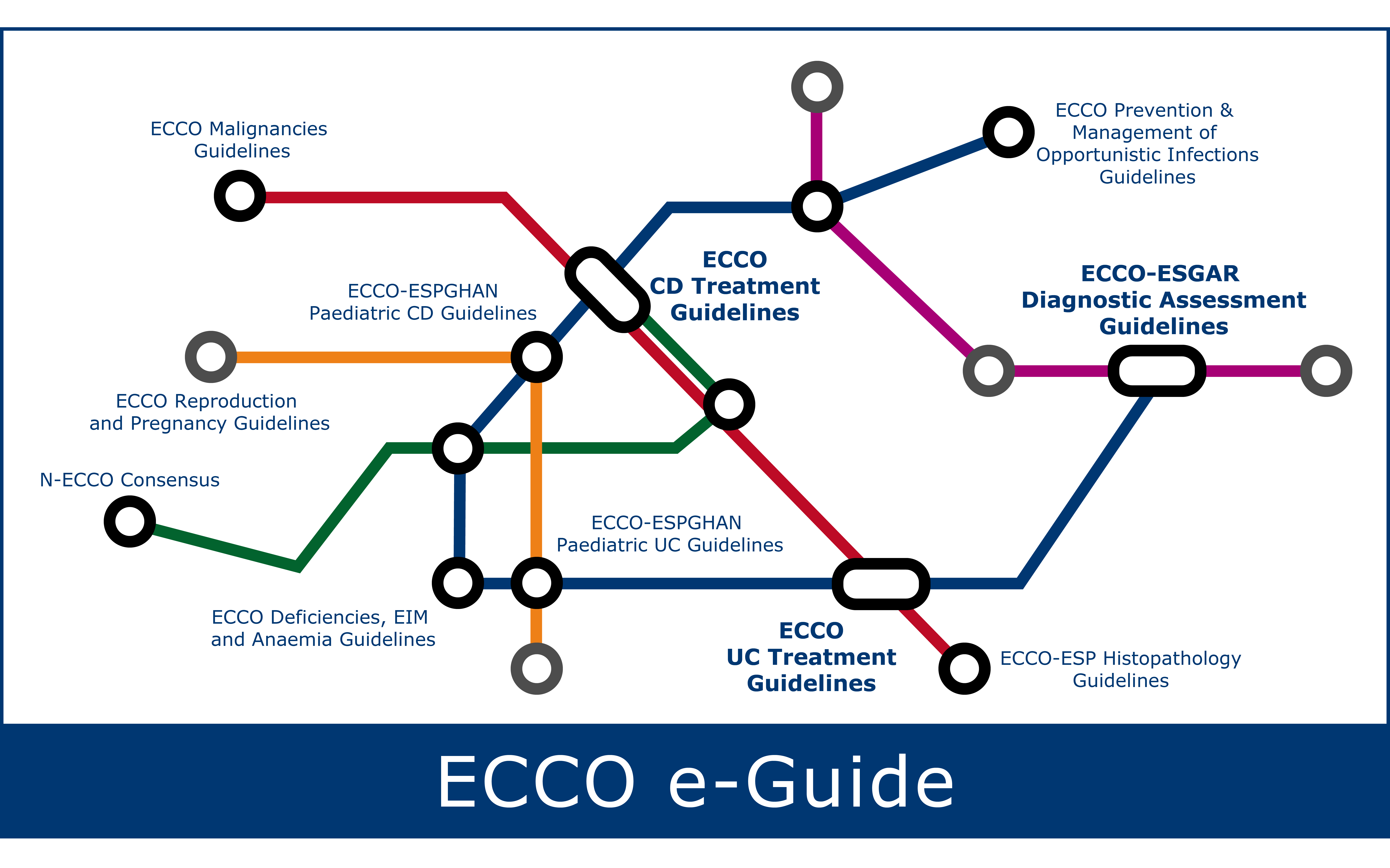General histologic assessment in IBD (including CD)
Histologic assessment in Crohn´s Disease
Granulomas occur in Crohn’s disease, but also in
- Mycobacterium sp.
- Chlamydia sp.
- Yersinia pseudotuberculosis
- Treponema sp.
Histologic assessment in children and adolescents
Histologic assessment for dysplasia/cancer in Crohn´s Disease
Patients with extensive Crohn’s colitis carry an increased risk of colorectal cancer. Endoscopy with biopsy can be used for secondary prevention and the detection of dysplasia [intra-epithelial neoplasia] [EL2].
The microscopic features for the diagnosis and grading of dysplasia–intra-epithelial neoplasia of the colon in CD are the same as those proposed for UC and, similarly, a second opinion is recommended for a firm diagnosis.
The focal nature of inflammation in Crohn’s colitis, the possibility of strictures and prevalence of segmental resection means that surveillance practice in UC cannot be transferred directly to Crohn’s colitis.
The use of targeted biopsies, aimed at lesions identified by chromoendoscopy or endomicroscopy should also be considered in patients with Crohn’s colitis.
General histologic assessment in IBD (including UC)
Histologic assessment in UC
Histologic assessment in children and adolescents
Histologic assessment for dysplasia/cancer in UC

